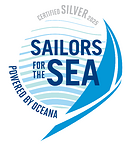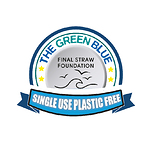Environmental News.
Published 16:53 on 21 Jan 2025


Thank you to all that turned up for the talk by representatives of the Hampshire and Isle of Wight wildlife Trust.
Caitlin and Ian gave a very informative talk on the 4 areas that the Hampshire and Isle of Wight Wetlands Trust are working to help restore the quality of our harbour, seagrass, oysters, saltmarsh and coastal birds.
There were two QR codes on the night which I have attached the weblinks for:
The first is a report on the current state of the Solent Seascape project and makes very interesting reading.
https://solentseascape.com/resource/solent-state-of-nature-report-solent-seascape-project/
The second is a link to a survey that we were encouraged to fill in. I have filled it on and it doesn't take long.
https://www.smartsurvey.co.uk/s/nature_recovery_in_the_solent
We are very lucky to have two very important habitats in the harbours.
The seagrass beds are immensely important for both people and wildlife. They provide a home for a wide range of amazing species - like cuttlefish, seahorse and stalked jellyfish - but they also help tackle the climate emergency through absorbing masses of carbon; they support important local fisheries and help reduce coastal erosion.
Our saltmarshes are hugely important for breeding seabirds and other marine birds, especially Sandwich Tern, Black-headed Gull and Mediterranean Gull. Saltmarsh habitats act as a natural flood and coastal defence and are very efficient at storing carbon, mitigating the impacts of climate change. Because of this, they are often referred to as a 'blue carbon' habitat. Saltmarshes also improve water quality and also provide habitat for an incredible breadth of species.
Oysters filter large amounts of water; for example, just one adult native oyster can filter over 140 litres of water per day.
We have many invasive Pacific oysters in the harbourbut no native oysters any more. Although the Pacific oysters are invasive and we would rather have our native ones, at least the Pacific ones are still filtering the water and cleaning it to help other organisms survive. But Cailtin was telling us about the work they are doing to restore the natural oyster population.
The Solent Seascape Project are putting native oysters in the harbour and we can get involved with this by helping clean the oysters. If you want to get involved then do contact Caitlin mailto:Caitlin.woombs@hiwwt.org.uk
There is a concern about the fibreglass particles that have been detected in the soft parts of oysters collected close to an active boatyard in Chichester Harbour. This emphasised to us the importance of collecting our boat scrapings when scrubbing down. There is a very interesting article about this in Science Direct from Julylast year.
Ian talked about how important the birds are and the initiatives to protect our special birds that we have in the harbour such as the curlew, which is in decline, the Dark-bellied Brent Geese, which we seem o have a lot of over the winter but there numbers are declining and there are far fewer young birds this year. There are various different projects going on such as the Tern beds at the Oyster Beds, the special area on Hayling Island for the Plovers and apparently they are introducing wooden nests for Oyster Catchers.
- Next events:
- Bird Aware walk on 22nd February. We have now reached the maximum number for this walk. If there is more interest then I - can try to set up another one in November when the migratory birds return again. Do let me know if this is of interest to you.
- Harbour wide beach Clean on 22nd March. We are hoping that all the clubs in Chichester harbour will do a beach clean on the same day. Come and join us from 10am-12noon to clean round the boat yard and foreshore. These have been very successful in the past. Bags and pickers will be provided but please bring your own gloves and appropriate footwear.
Claire Ashton
Environmental Officer. environment@langstone.org.uk






